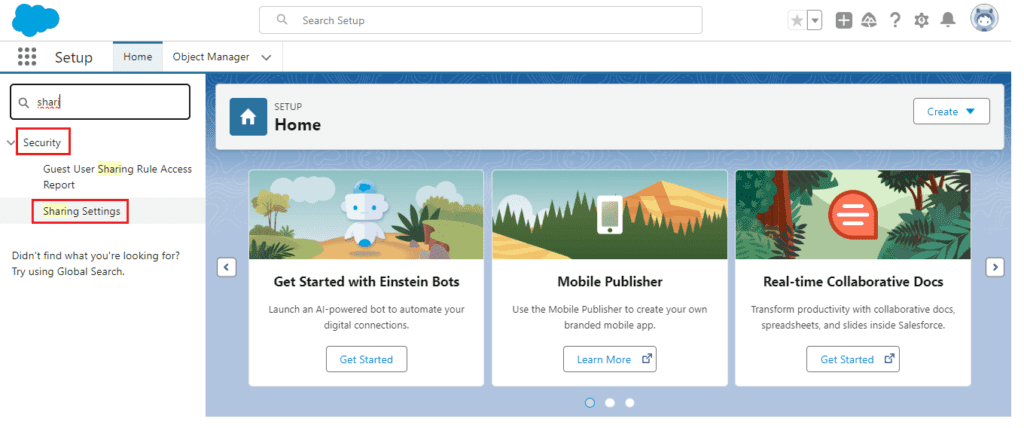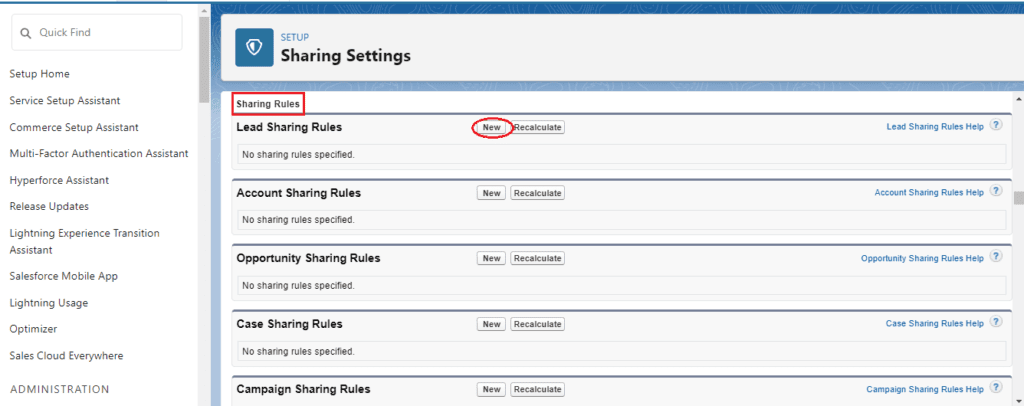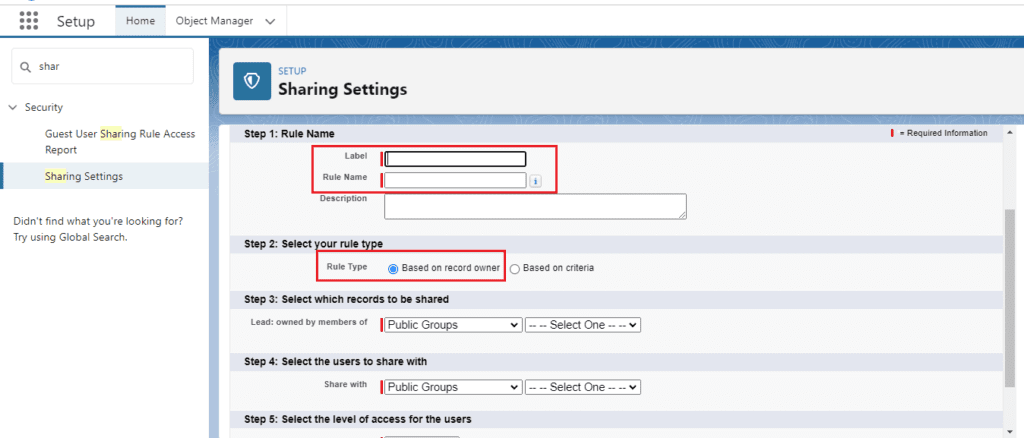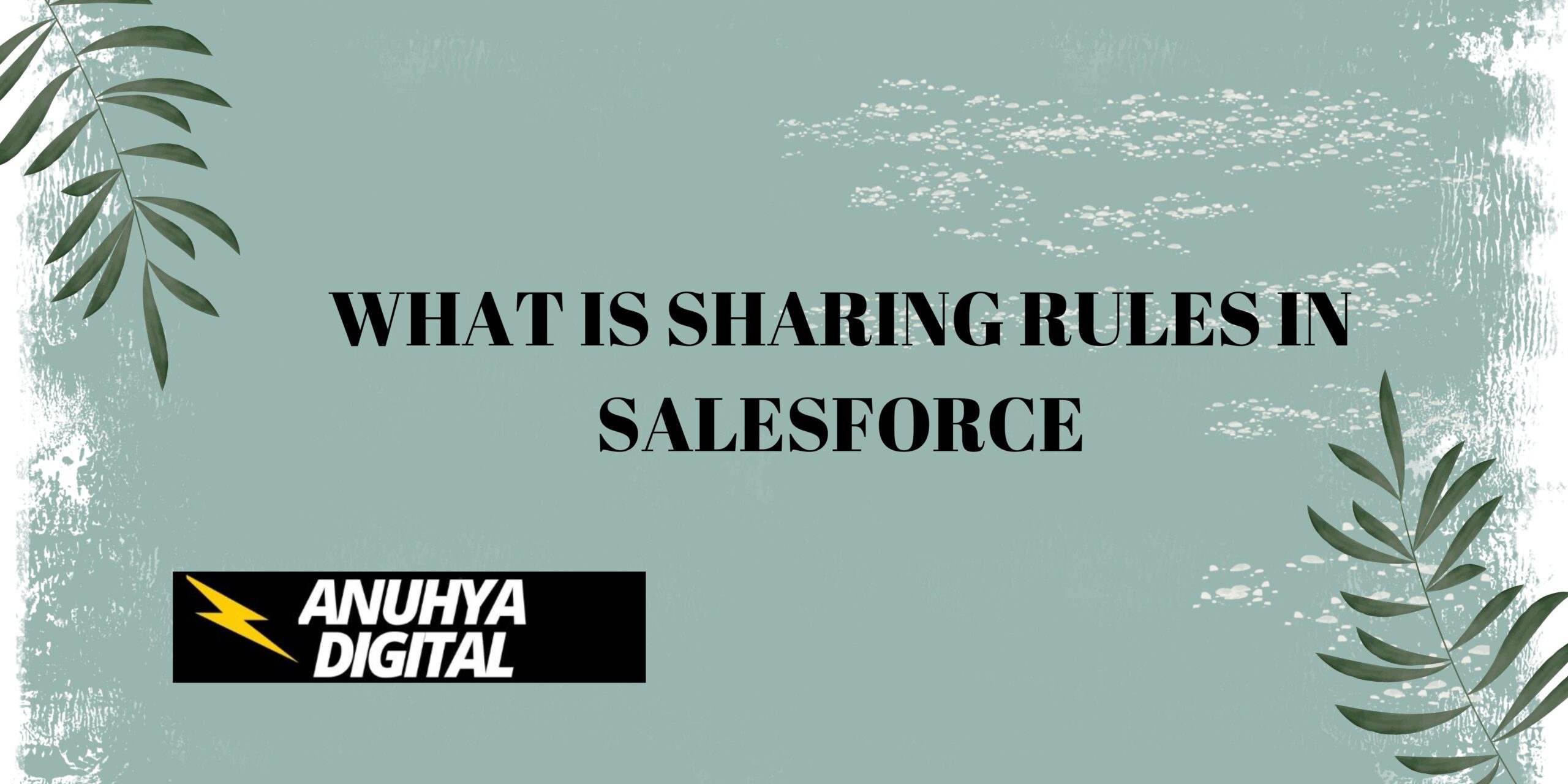In our previous blog post we had discussed about What is OWD in Salesforce.In these blog post we discuss about What is Sharing Rules in Salesforce
Contents
- 1 What is Sharing Rules in Salesforce
- 1.1 Introduction to sharing rules in salesforce:-
- 1.2 Overview of Salesforce Sharing Rules:-
- 1.3 Importance of Sharing Rules in Salesforce:-
- 1.4 How Sharing Rules Impact Data Visibility:-
- 1.5 Types of Sharing Rules:-
- 1.6 Criteria-Based Sharing Rules:-
- 1.7 How to create sharing rules in salesforce:-
- 1.8 Sharing Rule Considerations:-
- 1.9 Sharing Rule Exceptions:-
- 1.10 Sharing Rule Best Practices:-
- 1.11 Collaboration with Salesforce Administrators:-
- 1.12 Conclusion:-
What is Sharing Rules in Salesforce
Introduction to sharing rules in salesforce:-
Salesforce is a powerful tool for businesses to manage customer relationships and streamline sales processes. A key aspect of Salesforce is its sharing rules, which govern how data is shared and accessed within the system. In this comprehensive guide, we will delve into the intricacies of sharing rules in Salesforce, exploring their importance, types, considerations, best practices, and future trends.
Overview of Salesforce Sharing Rules:-
Sharing rules in Salesforce dictate who can view and edit specific records, ensuring data privacy and security. By defining access levels for different users, organizations can maintain control over their data while promoting collaboration and efficiency.
Importance of Sharing Rules in Salesforce:-
Effective sharing rules are essential for ensuring that the right people have access to the right information at the right time. By properly configuring sharing rules, organizations can prevent data breaches, maintain compliance with regulations, and enhance overall data quality and integrity.
How Sharing Rules Impact Data Visibility:-
Sharing rules directly influence the visibility of records within Salesforce. By appropriately setting up sharing rules, organizations can control which users can view, edit, or delete specific records, ensuring that sensitive information is protected while still enabling collaboration.
Types of Sharing Rules:-
Role-Based Sharing Rules:-
Role-based sharing rules in Salesforce are based on the roles assigned to users within the organization. By defining access levels according to user roles, organizations can ensure that data is shared appropriately across different departments and teams.
- Definition and Purpose of Role-Based Sharing Rules: Role-based sharing rules establish visibility and access levels for records based on user roles, streamlining data sharing within the organization.
- Setting Up Role-Based Sharing Rules in Salesforce: Administrators can configure role-based sharing rules by defining access levels for each role and specifying which records they can access.
- Limitations and Considerations of Role-Based Sharing Rules: While role-based sharing rules are effective for broad access control, they may not provide the granularity needed for highly specific sharing scenarios.
Criteria-Based Sharing Rules:-
Criteria-based sharing rules allow organizations to define access levels based on specific criteria, such as record attributes or field values. By setting criteria-based sharing rules, organizations can fine-tune access permissions for individual records or groups of records.
- Explanation of Criteria-Based Sharing Rules: Criteria-based sharing rules enable organizations to restrict access to records based on defined criteria, enhancing data security and privacy.
- Implementing Criteria-Based Sharing Rules in Salesforce: Administrators can create criteria-based sharing rules by setting up criteria-based sharing criteria and defining access levels accordingly.
- Best Practices for Using Criteria-Based Sharing Rules: Organizations should carefully define criteria-based sharing rules to ensure that access is restricted appropriately while still promoting collaboration and data sharing.
How to create sharing rules in salesforce:-
step1:- go to setup click on the gear icon And open home page ,left side top search bar is there ,search on search bar sharing settings.show in below figure.

step2:-double click on sharing settings the new page will opens ,drop down the page sharing will be appears ,click on the new button

step3:- new page opens and in that page fill given labels ,in that page two rule types is there select one rule (Based on record owner)

step4:- you have to select the another rule type is (Based on criteria).

finally click on the save button.
you want to know more about this topic is What is Sharing Rules in Salesforce click here
Sharing Rule Considerations:-
Record Ownership and Sharing Settings:-
Record ownership in Salesforce is crucial for determining who has primary control over specific records. By combining record ownership with sharing settings, organizations can establish a robust data access control system that balances ownership rights with data sharing needs.
- Understanding Record Ownership in Salesforce: Record ownership designates who has the primary responsibility for specific records, influencing access levels and permissions within the organization.
- How Sharing Settings Impact Record Access: Sharing settings determine how records are shared among users, complementing record ownership to ensure that data is accessible to the right individuals.
- Balancing Ownership and Sharing Rules for Data Security: Organizations must strike a balance between record ownership and sharing rules to safeguard data privacy and security while facilitating collaboration.
Sharing Rule Exceptions:-
Sharing rule exceptions allow organizations to customize access levels for specific scenarios that deviate from standard sharing rules. By defining sharing rule exceptions, organizations can address unique access requirements and ensure data integrity.
- Defining Sharing Rule Exceptions: Sharing rule exceptions provide a mechanism for adjusting access permissions for specific records or user groups, accommodating exceptions to standard sharing rules.
- When to Use Sharing Rule Exceptions: Organizations should utilize sharing rule exceptions when standard sharing rules do not adequately address unique access requirements, ensuring that data access is tailored to specific scenarios.
- Managing and Troubleshooting Sharing Rule Exceptions: Administrators should carefully manage and monitor sharing rule exceptions to prevent data breaches and ensure compliance with data access policies.
Sharing Rule Best Practices:-
Regular Review of Sharing Rules:-
Regularly reviewing sharing rules is essential for maintaining data security and compliance with regulations. By conducting periodic sharing rule audits, organizations can identify and resolve inconsistencies, enhance data governance, and ensure adherence to data privacy regulations.
- Importance of Periodic Sharing Rule Audits: Periodic sharing rule audits help organizations identify and correct inconsistencies, improving data integrity and security.
- Identifying and Resolving Sharing Rule Inconsistencies: By proactively monitoring sharing rules and addressing inconsistencies, organizations can prevent data leakage and unauthorized access.
- Ensuring Compliance with Data Privacy Regulations: Organizations must ensure that sharing rules comply with data privacy regulations such as GDPR and CCPA, protecting sensitive information and preserving customer trust.
Collaboration with Salesforce Administrators:-
Collaborating with Salesforce administrators is crucial for optimizing sharing rules and ensuring effective data access control. Organizations should work closely with administrators to fine-tune sharing rules, address complex configurations, and provide training on sharing rule guidelines and updates.
- Working with Administrators to Optimize Sharing Rules: Collaborating with administrators allows organizations to leverage their expertise in fine-tuning sharing rules for optimal data access control.
- Seeking Assistance for Complex Sharing Rule Configurations: Administrators can assist organizations in setting up complex sharing rule configurations, ensuring that data access is appropriately controlled.
- Training Teams on Sharing Rule Guidelines and Updates: Organizations should provide training to teams on sharing rule guidelines and updates, empowering users to understand and adhere to data access policies.
Conclusion:-
Recap of Key Points on Sharing Rules in Salesforce:-
Sharing rules in Salesforce play a critical role in controlling data access, ensuring data privacy and security, and promoting collaboration among users. By understanding the types, considerations, and best practices of sharing rules, organizations can optimize their data access control mechanisms and enhance overall data management.
Impact of Effective Sharing Rules on Sales and Customer Relationships:-
Effective sharing rules have a direct impact on sales processes and customer relationships by ensuring that the right information is accessible to the right people at the right time. By implementing robust sharing rules, organizations can enhance sales efficiency, improve customer service, and drive business growth.
Future Trends in Salesforce Sharing Rule Management:-
As Salesforce continues to evolve, sharing rule management will become increasingly sophisticated, with new features and functionalities designed to enhance data access control and collaboration. Organizations should stay abreast of future trends in Salesforce sharing rule management to optimize their data management practices and maximize the benefits of Salesforce.
Remember, effective sharing rules are the foundation of a secure and collaborative data environment in Salesforce. By adopting best practices, collaborating with administrators, and staying informed about future trends, organizations can maximize the benefits of Salesforce and drive success in their sales and customer relationships.
In our next blog post we will discuss about What is Custom Buttons in Salesforce

3 thoughts on “What is Sharing Rules in Salesforce”